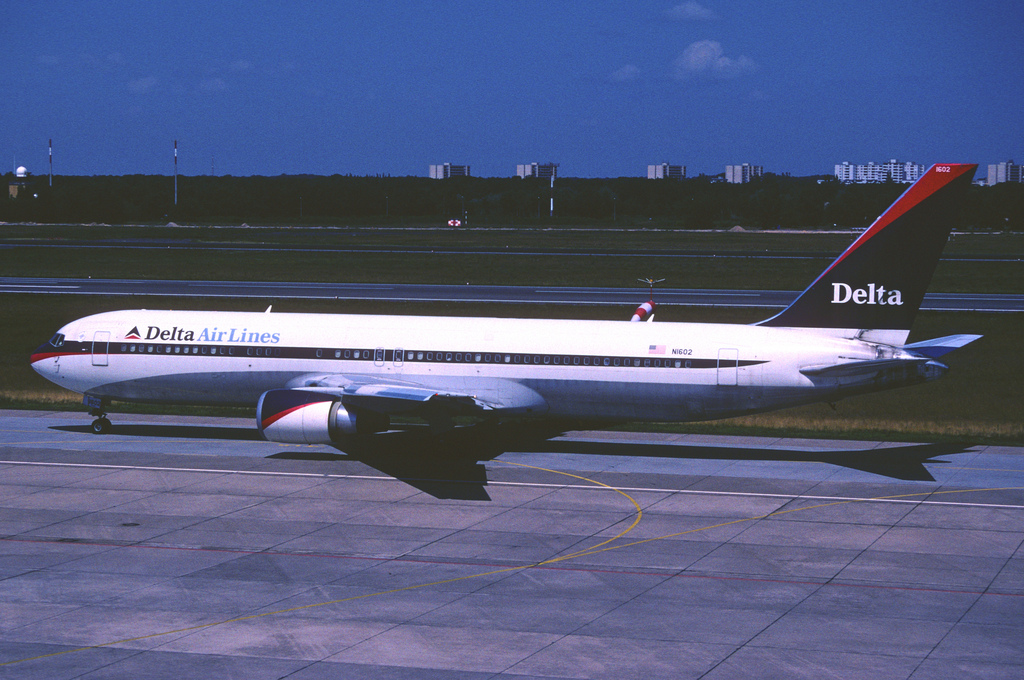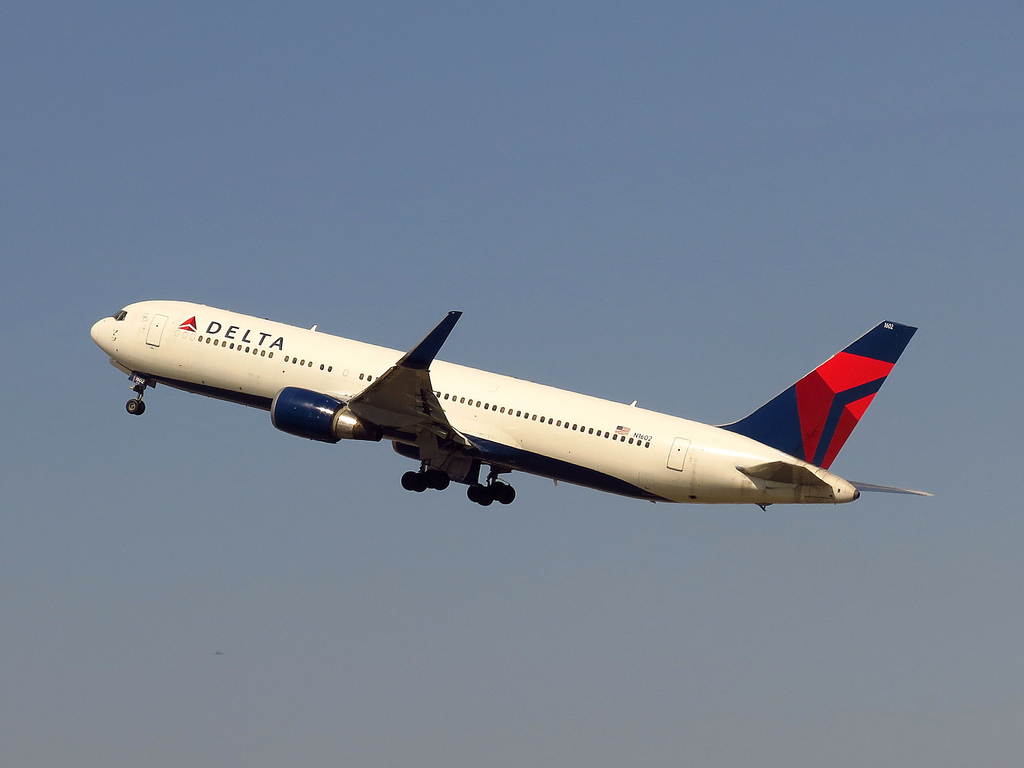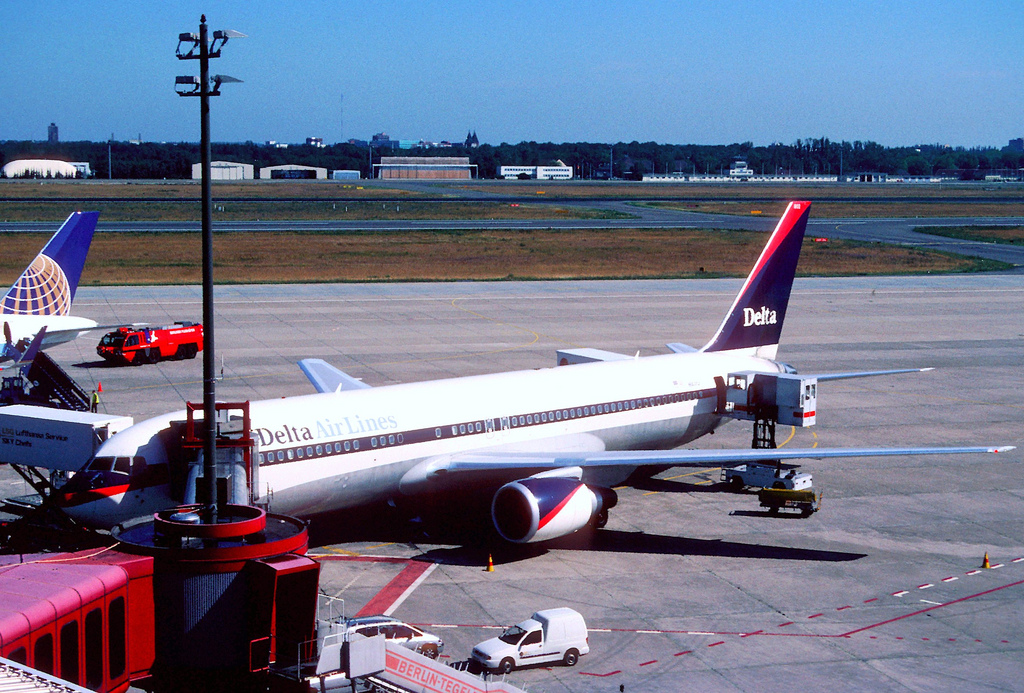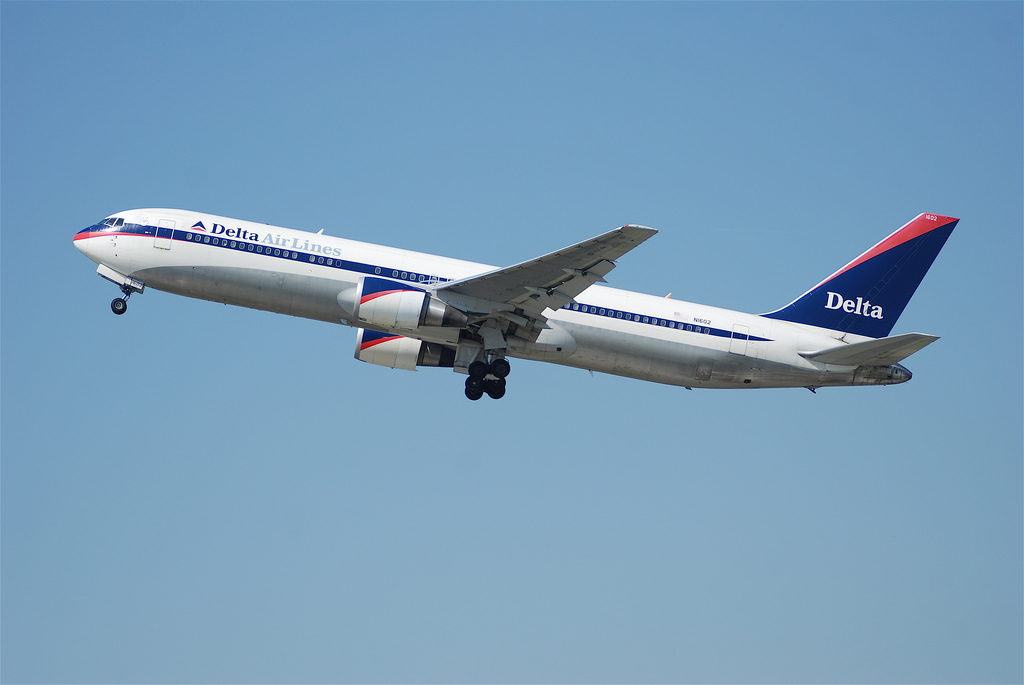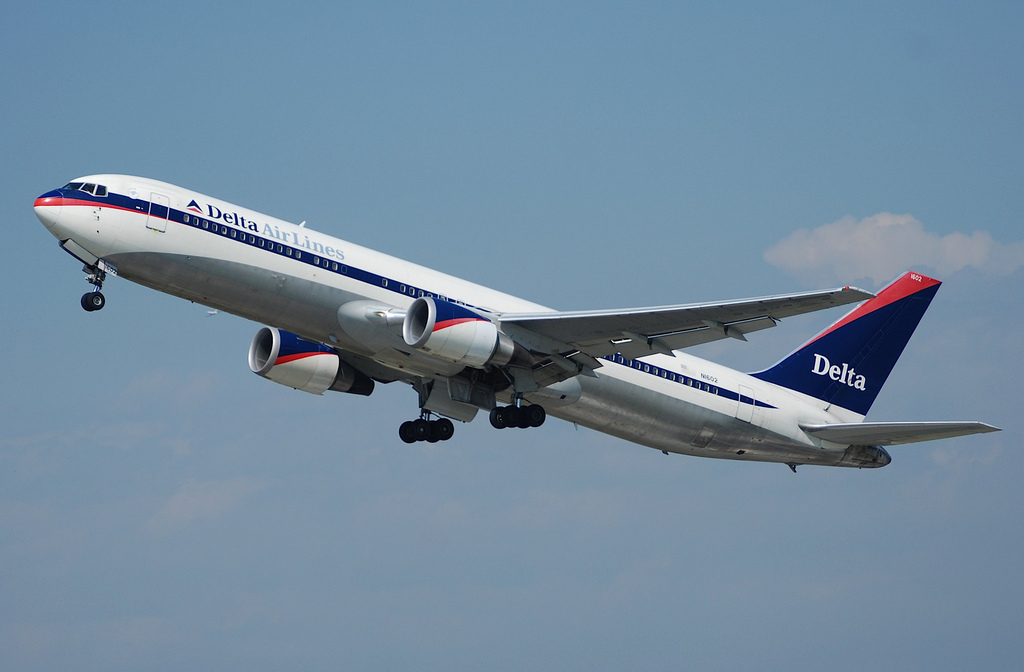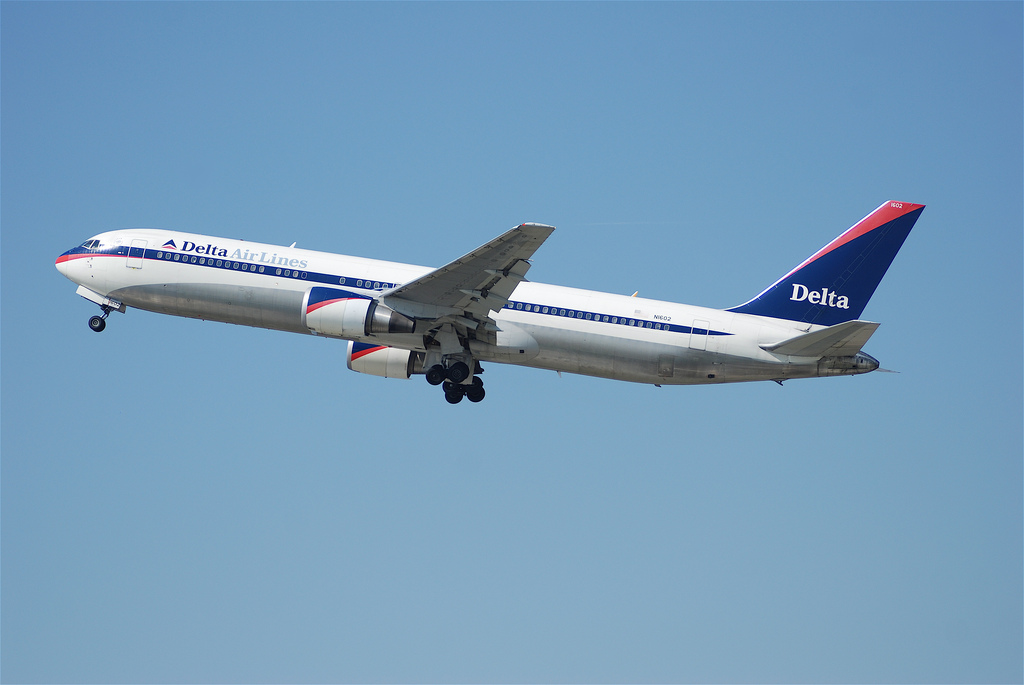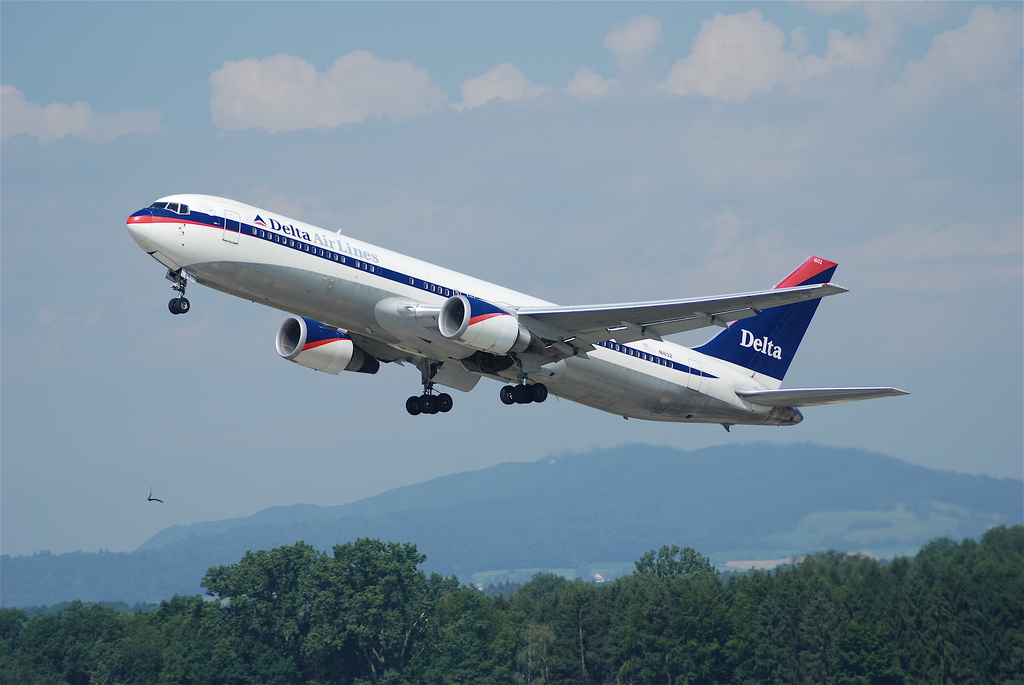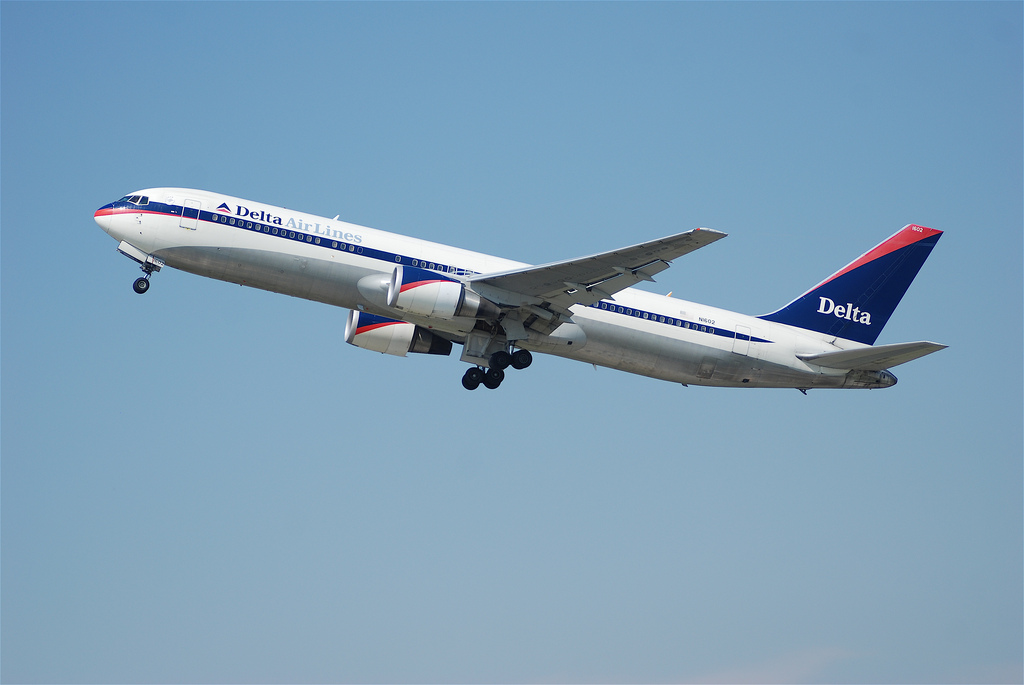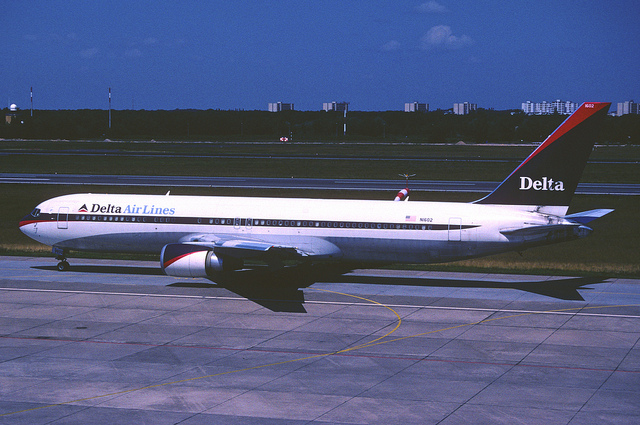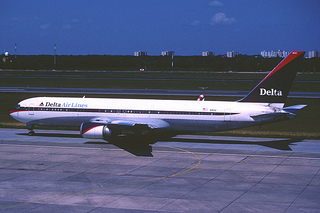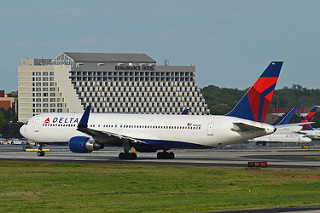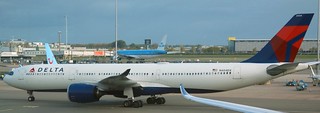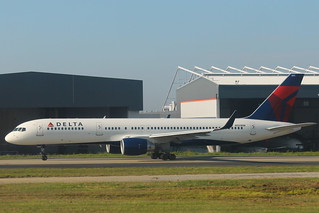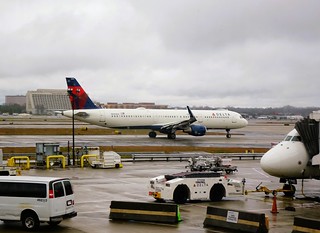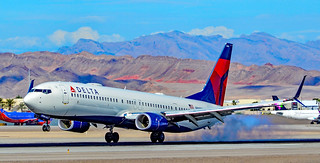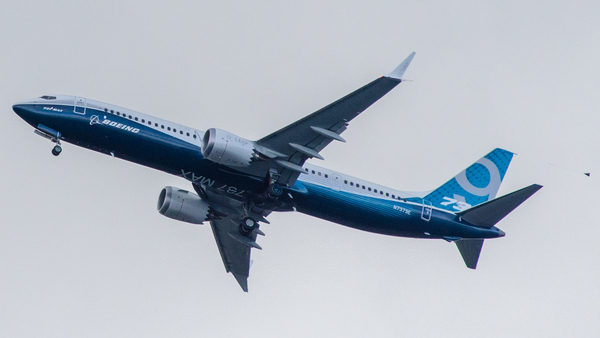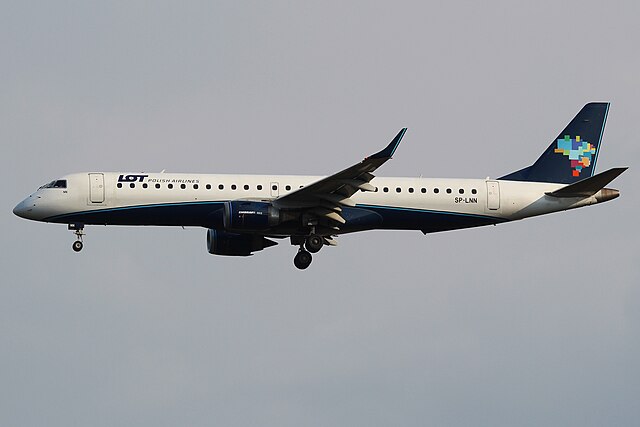Delta B763 over Atlantic on Feb 8th 2022, cabin pressure problems
Last Update: December 11, 2023 / 17:43:28 GMT/Zulu time
Incident Facts
Date of incident
Feb 8, 2022
Classification
Incident
Cause
Cabin pressure problems
Airline
Delta Airlines
Flight number
DL-126
Departure
New York JFK, United States
Destination
Madrid, Spain
Aircraft Registration
N1602
Aircraft Type
Boeing 767-300
ICAO Type Designator
B763
On Feb 22nd 2022 Spain's CIAIAC reported an investigation was opened into the occurrence.
On Dec 11th 2023 the CIAIAC released their final report concluding the probable causes of the incident were:
The investigation has revealed that the incident was caused by water leaking from a tube with a broken clamp which, when it froze, blocked the outflow valve doors.
The following factors are thought to have contributed:
- The use of plastic tube clamps in the vicinity of the OFV (section 46), the deterioration of which had previously caused leaks in other incidents in the avionics compartment (section 41), where they had since been replaced by metal clamps.
- The absence of a fault in the BITE ground test performed prior to the flight.
- The fact that there is no requirement to perform a visual inspection of the OFV during Task 803 of 21-31 of the FIM when the automatic pressurisation system becomes inoperative in flight, the manual operation is normal, and the BITE does not detect a fault on the ground.
The CIAIAC analysed:
Analysis of the leak
Following the incident, the operator’s maintenance personnel detected a water leak under the rear galley on the left side of the aircraft at station 1562, coming from a tube (PN 79211-012) secured with a broken plastic clamp (CA62507-56BL).
On the flight from Barcelona to New York, the water leak could have caused water to accumulate and ice to form, blocking the movement of the OFV and rendering the automatic pressurisation control system inoperative. The crew managed to control the cabin pressure manually, so the manual mode motor (DC motor) was able to move the OFV and overcome the ice blockage.
Subsequently, during the incident flight from New York to Madrid, the water leak could have once again caused ice to form, blocking the movement of the OFV and rendering the automatic pressurisation control system inoperative, with the situation being further aggravated when the manual control was also unable to overcome the OFV’s ice blockage.
Analysis of the use of plastic clamps
Service Bulletin 767-38A0073 identified the potential for a ruptured plastic clamp to cause a water leak that could affect the electronic equipment in the forward section of the aircraft.
Despite the fact that the IPC provides one-way interchangeability from the plastic CA625 series to the metal 14C33 series, there are no publications explicitly addressing the need to implement said change in section in which the OFV is located.
As the OFV is an electromechanical device, using metal clamps in its vicinity could have mitigated the consequences of a water leak caused by a broken clamp and a subsequent OFV blockage.
The recording of another incident by the operator two days later, in which a broken plastic clamp led to the formation of ice on the OFV and the failure of the automatic in-flight pressurisation system, confirms the need for metal clamps to be used.
Analysis of the detection and recording of the fault in the CPC memory
According to the information provided by the CPC manufacturer, if an OFV blockage resulted in a temporary loss of control of the OFV, the in-flight BITE test would have detected and recorded the AC MOTOR fault in the memory.
According to the information received, on the ground, both the BITE test performed by the operator before the start of the incident flight, triggered by the CABIN AUTO INOP warning from the previous flight, and the test performed after the incident, did not find a fault.
The system had detected the failure in flight, but it could not subsequently recover it on the ground. This could be due to the fact that the fault was not recorded or that the BITE ground test was not executed as indicated in the task. The BITE test checks the system’s integrity, but on these two occasions, the OFV blockage fault could not be recovered once on the ground. Consequently, we have concluded that the CPC manufacturer should assess the possibility that the system may be failing to record faults and consider the consequences because if the fault (AC MOTOR) had been recorded as expected, task 803 of sections 21-31 of the FIM would have indicated the need to replace the OFV actuator as a first step in attempting to isolate the fault and, therefore, would probably have resulted in the water being identified earlier. Also, given the possibility that the test may not have been executed as the task indicates, we believe it necessary for the operator to disseminate the lessons learned from this incident to the maintenance technicians.
Analysis of task 803 of 21-31 of the FIM
Before the incident flight, given the simultaneous failure of two independent pressure control systems with the manual system operating normally and a BITE test with no recorded failures, the possibility that the other common system components, including the OFV, may have failed, could have been considered despite the fact that running task 803 of the FIM through the BITE test determined that the system was okay.
Therefore, in the event of the automatic pressure control system becoming inoperative due to the failure of both the independent control systems but with the manual control functioning correctly, we believe the FIM should recommend additional inspections that would have identified the presence of water before the incident flight, such as a visual inspection of the OFV.
Analysis of the position of the OFV and the location of the ice
The graphs in Figure 23 show that following the failure of the automatic pressure control on the incident flight, the cabin pressure dropped and rose, signalling the active manual control by the crew. Therefore, the OFV was responding to the movements commanded by the crew. From 06:17:04 h, the pressure started to decrease until it reached 10 psi at 06:24:44 h. Consequently, we can determine that this is the period in which the OFV was blocked, leading to depressurisation. It is believed that the water froze in the control arm or the OFV actuator linkage, preventing the motors from closing the OFV.
Analysis of the management of the depressurisation
During the period that followed the activation of the CABIN ALTITUDE warning indicating that 10000 ft of cabin altitude had been exceeded, all the occupants (passengers and crew) used their oxygen masks, and the aircraft descended to a safe altitude.
Both pilots’ statements indicate that they performed the memory items associated with the CABIN ALTITUDE warning. According to the procedure, the actions required to commence the emergency descent manoeuvre after checking the cabin altitude and rate should have been performed without delay; however, despite having lost control of the pressurisation, they were not taken until six minutes after the warning activated, during which time the cabin altitude rose to 18400 ft, possibly because of the focus on regaining control.
According to the logic that automatically deploys the cabin oxygen masks and the in-cabin pressure data recorded on the FDR, they should have been deployed when the aircraft was near FL340. Despite not making the emergency descent to Vmo as per the CABIN ALTITUDE procedure, the aircraft reached FL120 approximately seven minutes later and within the capacity of the oxygen generators, during which time the passengers and cabin crew were supplied with oxygen through the masks.
On seeing the oxygen masks being deployed, the line training captain in the passenger cabin went to the flight deck and took the co-pilot’s seat. Although he thought the best decision was to exchange positions, in this situation and based on the information gathered during the investigation, there did not appear to be any circumstances in which swapping seats with the qualified, experienced and non-incapacitated co-pilot would assist in regaining control over the pressurisation and completing the emergency descent manoeuvre. For the duration of this exchange, only one pilot (the captain under supervision) remained in a cockpit seat with the oxygen mask in place and in charge of continuing the emergency descent manoeuvre.
This situation could have been avoided if the line training captain had occupied the jump seat using the oxygen mask and assisting the other two pilots through the emergency in the few short minutes that remained to reach a safe altitude.
The lack of a CVR recording covering the period of the incident limited the analysis of the events.
The cabin crew had extensive experience and were completing the breakfast service. They reported during their interviews that they responded to the loss of pressure by taking the actions described in paragraph 1.6.8, ensuring the welfare of the passengers.
On reaching the safety altitude, the line training captain informed the purser and explained what had happened to the passengers. During their interviews, the cabin crew explained that the information provided to the passengers by the line training captain reassured and comforted them.
Analysis of the continuation of the flight
The flight crew decided to continue to their destination airport in Madrid, from which they were approximately 250 NM away in favourable weather conditions. Having regained control of the pressurisation, they decided to climb, being cleared to FL280.
According to their account, they based this decision on optimising the remaining fuel and even considered flying at a higher altitude for better terrain clearance despite ATC informing them of the minimum altitude they could descend to.
During the prior emergency descent, the oxygen generators that supply the masks in the passenger cabin had been activated, the duration of which was limited. It should be noted that there were 59 passengers on board, i.e. approximately one-quarter of the passenger seats were occupied. During the loss of cabin pressure, the oxygen generators corresponding to these 59 seats were activated. The crew did not recall any coordination measures being taken in this regard.
On the other hand, the automatic pressurisation system had failed on two consecutive flights, and on this occasion, the manual control had also failed temporarily, which was indicative of some kind of anomaly in the pressurisation system and, therefore, a recurrence of the failure for the remainder of the flight could not be ruled out.
Furthermore, taking into account the fact that the crew have recently undergone refresher training on the pressurisation system, the issue of a safety recommendation to the operator to reinforce crew training related to cabin pressure loss and to include the lessons learned from this event is considered appropriate.
Aircraft Registration Data
Incident Facts
Date of incident
Feb 8, 2022
Classification
Incident
Cause
Cabin pressure problems
Airline
Delta Airlines
Flight number
DL-126
Departure
New York JFK, United States
Destination
Madrid, Spain
Aircraft Registration
N1602
Aircraft Type
Boeing 767-300
ICAO Type Designator
B763
This article is published under license from Avherald.com. © of text by Avherald.com.
Article source
You can read 2 more free articles without a subscription.
Subscribe now and continue reading without any limits!
Read unlimited articles and receive our daily update briefing. Gain better insights into what is happening in commercial aviation safety.
Send tip
Support AeroInside by sending a small tip amount.
Related articles
Delta B763 over Labrador Sea on Aug 9th 2014, engine problem
A Delta Airlines Boeing 767-300, registration N1602 performing flight DL-467 from Moscow Sheremetyevo (Russia) to New York JFK,NY (USA), was enroute…
Delta B763 over Atlantic on Jun 2nd 2014, weather radar failure
A Delta Airlines Boeing 767-300, registration N1602 performing flight DL-53 from Detroit,MI (USA) to Sao Paulo Guarulhos,SP (Brazil) with 163…
Delta B763 near Denver on Jun 19th 2013, smoke in cockpit
A Delta Airlines Boeing 767-300, registration N1602 performing flight DL-1162 (dep Jun 18th) from Los Angeles,CA to New York JFK,NY (USA), was…
Delta B763 at New York on Apr 26th 2024, emergency slide trouble
A Delta Airlines Boeing 767-300, registration N176DN performing flight DL-520 from New York JFK,NY to Los Angeles,CA (USA), was climbing out of JFK's…
Delta A339 at New York on Apr 21st 2024, nose wheel steering fault
A Delta Airlines Airbus A330-900, registration N404DX performing flight DL-49 from Amsterdam (Netherlands) to New York JFK,NY (USA) with 295 people…
Delta B752 at Atlanta on Apr 18th 2024, flaps disagree on approach
A Delta Airlines Boeing 757-200, registration N551NW performing flight DL-2728 from Savannah,GA to Atlanta,GA (USA), was on final approach to…
Delta A321 at Atlanta on Apr 9th 2024, lightning strike
A Delta Airlines Airbus A321-200, registration N394DX performing flight DL-1192 from New York La Guardia,NY to Atlanta,GA (USA), was on approach to…
Delta B739 enroute on Mar 30th 2024, cracked windshield
A Delta Airlines Boeing 737-900, registration N888DU performing flight DL-1736 from Denver,CO to Minneapolis,MN (USA), was enroute at FL350 about…
Newest articles
United B39M at Orlando on Apr 26th 2024, runway incursion forces rejected takeoff
A United Boeing 737-9 MAX, registration N37540 performing flight UA-1929 from Newark,NJ to Orlando,FL (USA), had landed on Orlando's runway 18R and…
LOT E195 at Zurich on May 3rd 2024, technical issue on runway
A LOT Polish Airlines Embraer ERJ-195, registration SP-LNN performing flight LO-420 from Zurich (Switzerland) to Warsaw (Poland), was cleared to line…
Subscribe today
Are you researching aviation incidents? Get access to AeroInside Insights, unlimited read access and receive the daily newsletter.
Pick your plan and subscribePartner

A new way to document and demonstrate airworthiness compliance and aircraft value. Find out more.

ELITE Simulation Solutions is a leading global provider of Flight Simulation Training Devices, IFR training software as well as flight controls and related services. Find out more.

Your regulation partner, specialists in aviation safety and compliance; providing training, auditing, and consultancy services. Find out more.
AeroInside Blog
Popular aircraft
Airbus A320Boeing 737-800
Boeing 737-800 MAX
Popular airlines
American AirlinesUnited
Delta
Air Canada
Lufthansa
British Airways
